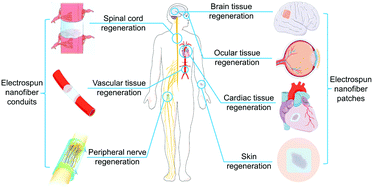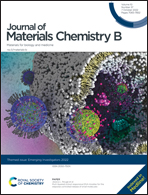Electrospun nanofibers for manipulating soft tissue regeneration
Abstract
Soft tissue damage is a common clinical problem that affects the lives of a large number of patients all over the world. It is of great importance to develop functional scaffolds to manipulate and promote the repair and regeneration of soft tissues. Owing to their unique composition and structural properties, electrospun nanofibers have attracted much attention for soft tissue regeneration. Electrospun nanofibers can be easily constructed and functionally modified to regulate their composition, morphology, structure, three-dimensional architecture, and biological functions, as well as specific light/electric/magnetic properties. By integrating multiple types of guidance cues, such as topographical and biochemical cues and external stimuli, electrospun nanofiber scaffolds can be used to manipulate cell behaviors and thus facilitate tissue regeneration. In this review article, we have first described the construction of electrospun nanofibers with specific morphology and topography and their capability of modulating cell migration, cell morphology, and stem cell differentiation. We have then discussed the role of electrospun nanofiber scaffolds in promoting the regeneration of different types of soft tissues, including nerves, skin, heart, blood vessels, and cornea, from the point of view of the anatomical structures and physiological regeneration processes of tissues. By presenting and discussing the recent progress of electrospun nanofibers in manipulating soft tissue regeneration, we hope to provide a possible solution and reference for the repair of tissue damage in clinical practice.

- This article is part of the themed collection: Journal of Materials Chemistry B Emerging Investigators


 Please wait while we load your content...
Please wait while we load your content...